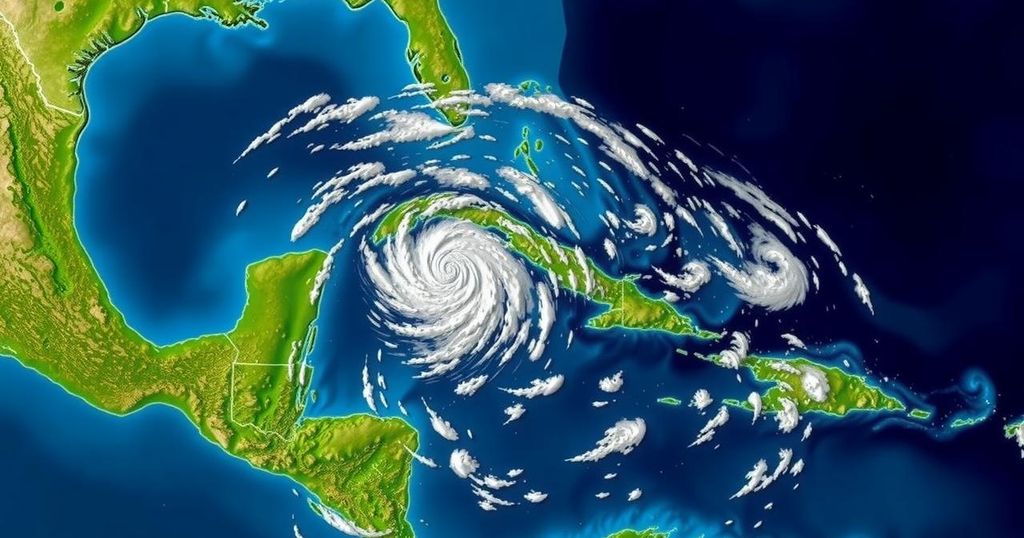NHC Monitors Active Hurricane Season: Two Systems and the Potential for Tropical Storm Nadine
The National Hurricane Center reports an active 2024 Atlantic hurricane season with two monitored systems. The second system has a 50% chance of becoming a tropical storm. Hurricane season lasts from June 1 to November 30, and predictions suggest a higher-than-average number of storms this year, with 13 named storms already recorded.
The National Hurricane Center (NHC) has observed an active 2024 Atlantic hurricane season, currently tracking two significant systems in the tropics. One of these systems, which has shown signs of development, presents a 50% chance of forming into a tropical storm within the next 48 hours. This highlights the unpredictable nature of tropical storm formation, emphasizing that storms which may seem unlikely can develop rapidly and warrant careful monitoring. In recent days, the region experienced concern regarding a different system that some anticipated would strengthen into Tropical Storm Nadine, shortly following Hurricane Milton’s impact on Florida. Fortunately, that particular disturbance dissipated over the open Atlantic, posing no threat to land. The first disturbance being monitored is a trough of low pressure situated a few hundred miles north of Puerto Rico and the Virgin Islands. Currently, this system is moving westward at approximately 20 mph, although it is not expected to organize significantly. Forecasts predict a mere 10% chance of development over the next 48 hours, likely due to adverse upper-level winds. The second disturbance, positioned north of eastern Honduras, exhibits better organization with widespread rainfall and thunderstorms. The NHC has rated this system’s chances of development as medium, standing at 50%, as it has the potential to briefly transition into a tropical depression or storm prior to making landfall over Belize and the Yucatan Peninsula by Saturday. Regardless of its status as a formal tropical storm, this system is predicted to contribute to heavy rainfall across Central America and southern Mexico this weekend. To provide context, early predictions for the 2024 hurricane season suggested an unusually active period, estimating 17 to 24 named storms, with 8 to 13 anticipated to develop into hurricanes. Historically, a standard season typically averages 14 named storms and 7 hurricanes. So far, 2024 has seen 13 named storms, of which nine evolved into hurricanes, including four classified as major hurricanes of Category 3 or above.
The 2024 Atlantic hurricane season extends from June 1 to November 30, a window during which tropical storms and hurricanes can develop in the Atlantic Ocean, Gulf of Mexico, and surrounding regions. The National Hurricane Center plays a crucial role in monitoring and forecasting tropical weather systems, providing vital information that can impact preparations and responses to potential storms. This year has already shown heightened activity, surpassing typical seasonal averages and prompting anticipation among meteorologists and emergency response teams regarding storm formations and their potential impacts.
In summary, the 2024 Atlantic hurricane season remains active with two systems currently being monitored, one of which has a 50% chance of developing into a tropical storm. While some systems may dissipate without threat, the unpredictability of tropical weather demands ongoing vigilance. The NHC continues to assess developments in these systems, with emphasis on the potential for significant rainfall impacts in the region, regardless of storm formation.
Original Source: www.statesman.com




Post Comment